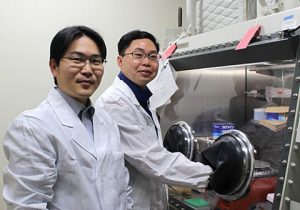
Researchers worldwide are on the hunt for novel materials that can improve the performance of basic components required to develop organic electronics. Researchers at Tokyo Tech report a unipolar n-type transistor with a world-leading electron mobility performance of up to 7.16 cm2 V−1 s−1.
This achievement heralds an exciting future for organic electronics, including the development of innovative flexible displays and wearable technologies.
Based on a news that Tokyo Tech published, a research team at Tokyo Tech’s Department of Materials Science and Engineering including Tsuyoshi Michinobu and Yang Wang report a way of increasing the electron mobility of semiconducting polymers, which have previously proven difficult to optimize. Their high-performance material achieves an electron mobility of 7.16 cm2 V−1 s−1, representing more than a 40 percent increase over previous comparable results.
In their study published in the Journal of the American Chemical Society, they focused on enhancing the performance of materials known as n-type semiconducting polymers. These n-type (negative) materials are electron dominant, in contrast to p-type (positive) materials that are hole dominant. “As negatively-charged radicals are intrinsically unstable compared to those that are positively charged, producing stable n-type semiconducting polymers has been a major challenge in organic electronics.” Michinobu explains.
The research therefore addresses both a fundamental challenge and a practical need. Wang notes that many organic solar cells, for example, are made from p-type semiconducting polymers and n-type fullerene derivatives. The drawback is that the latter are costly, difficult to synthesize and incompatible with flexible devices. “To overcome these disadvantages,” he says, “high-performance n-type semiconducting polymers are highly desired to advance research on all-polymer solar cells.””
Uning the material’s backbone conformation. This was made possible by the introduction of vinylene bridges capable of forming hydrogen bonds with neighboring fluorine and oxygen atoms. Introducing these vinylene bridges required a technical feat so as to optimize the reaction conditions.
Overall, the resultant material had an improved molecular packaging order and greater strength, which contributed to the increased electron mobility.
For more information please read: “Source”













